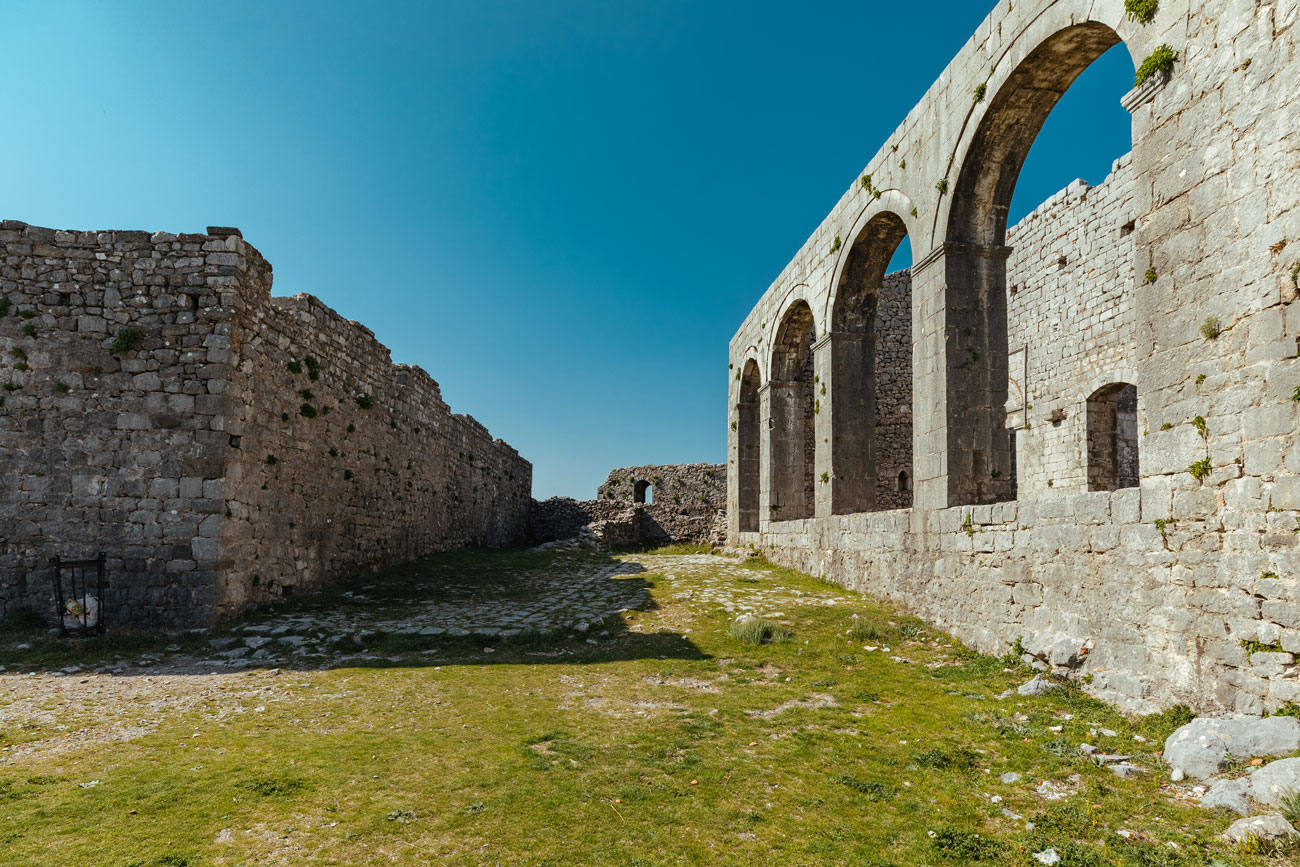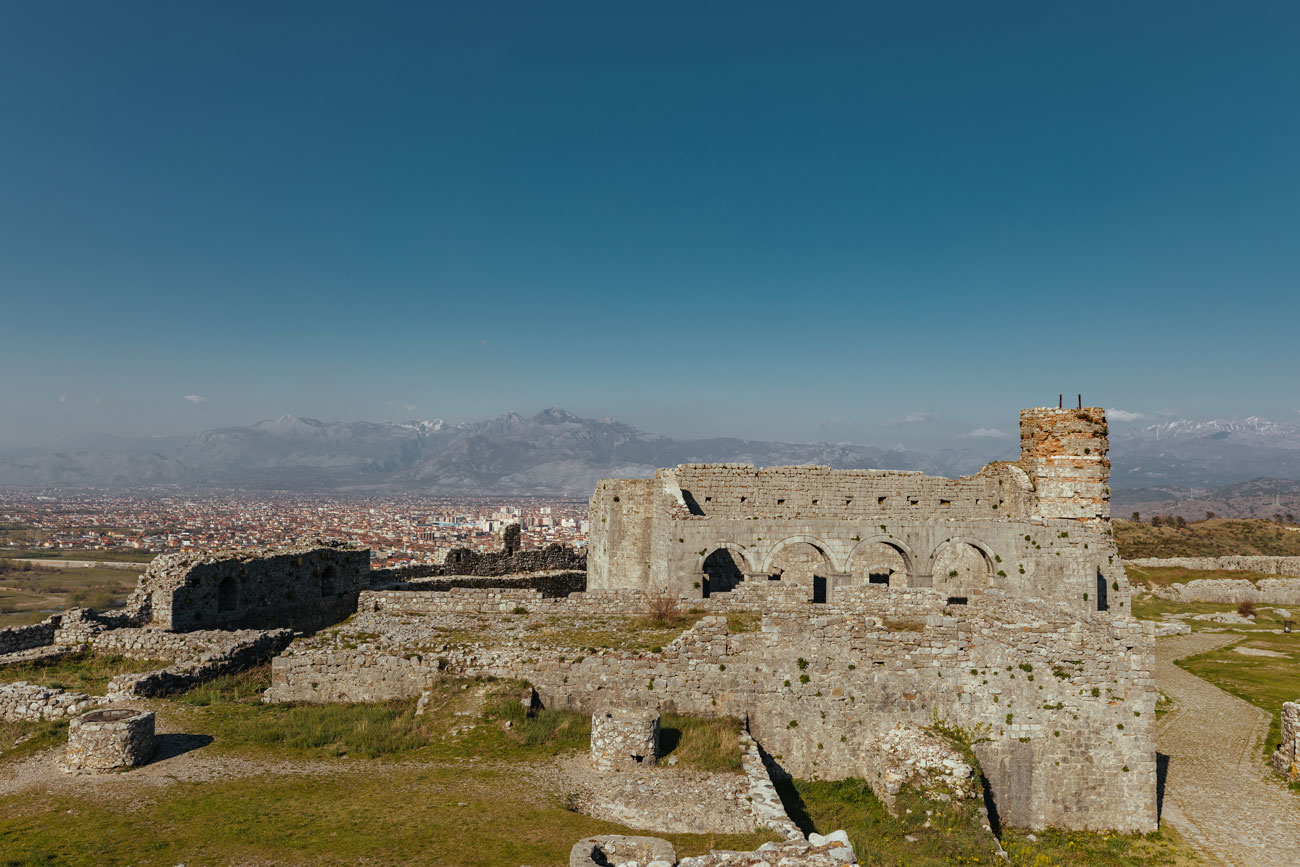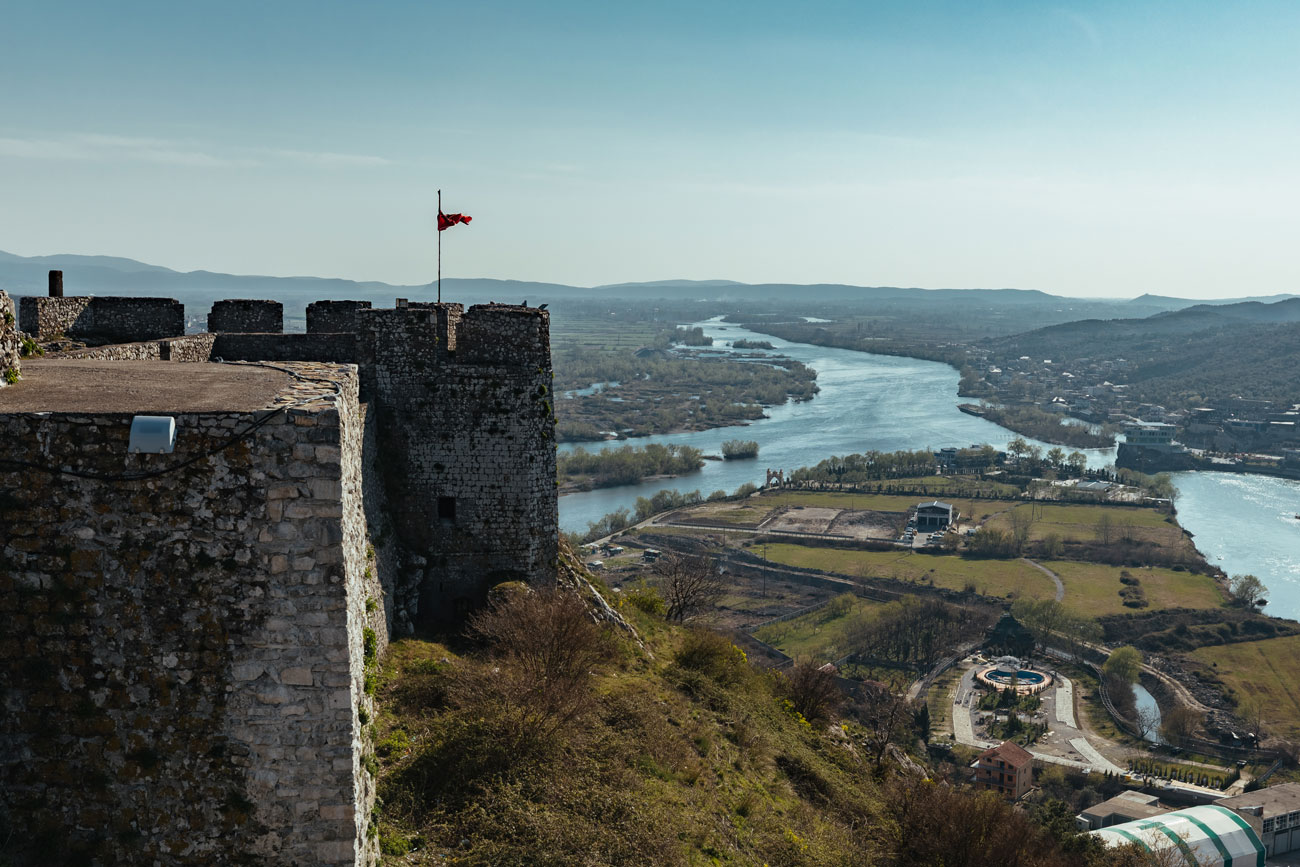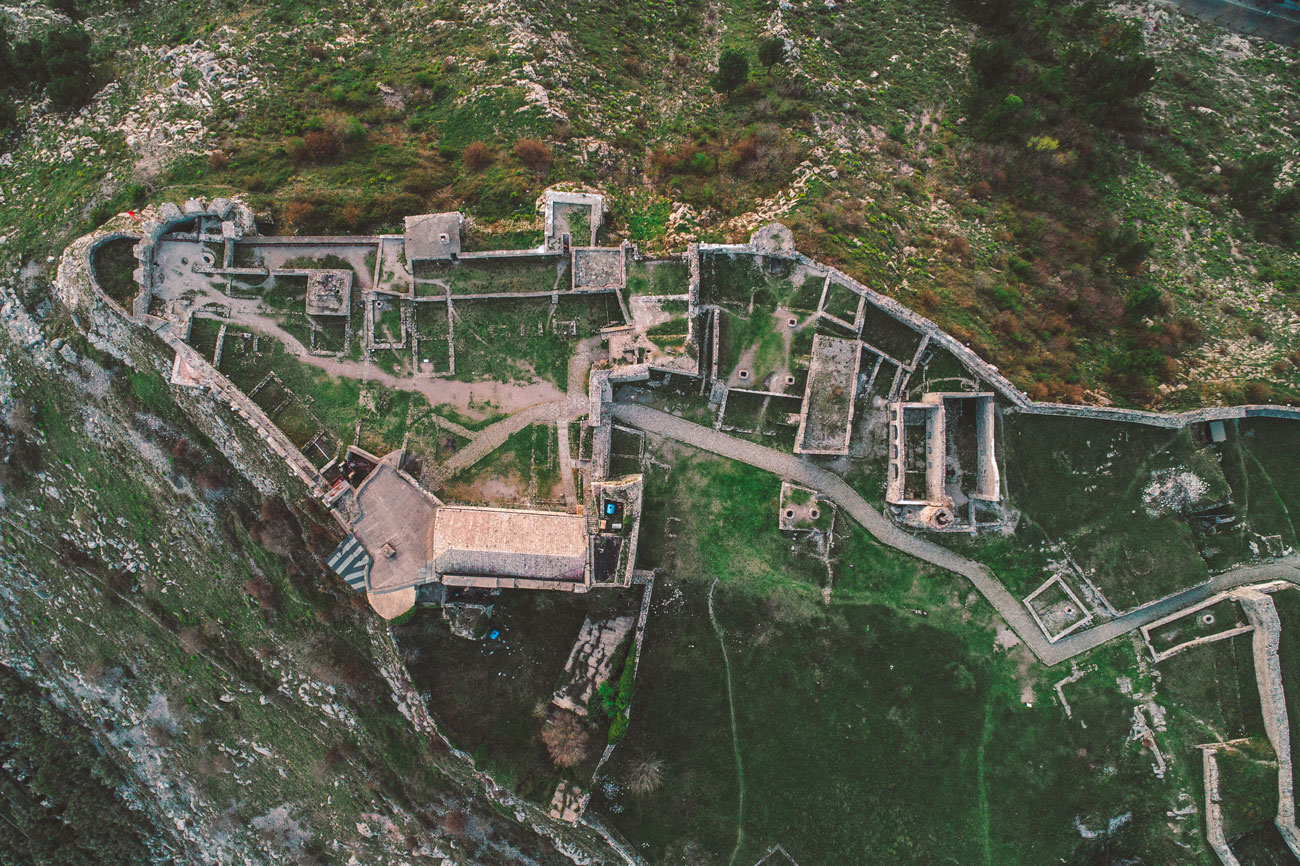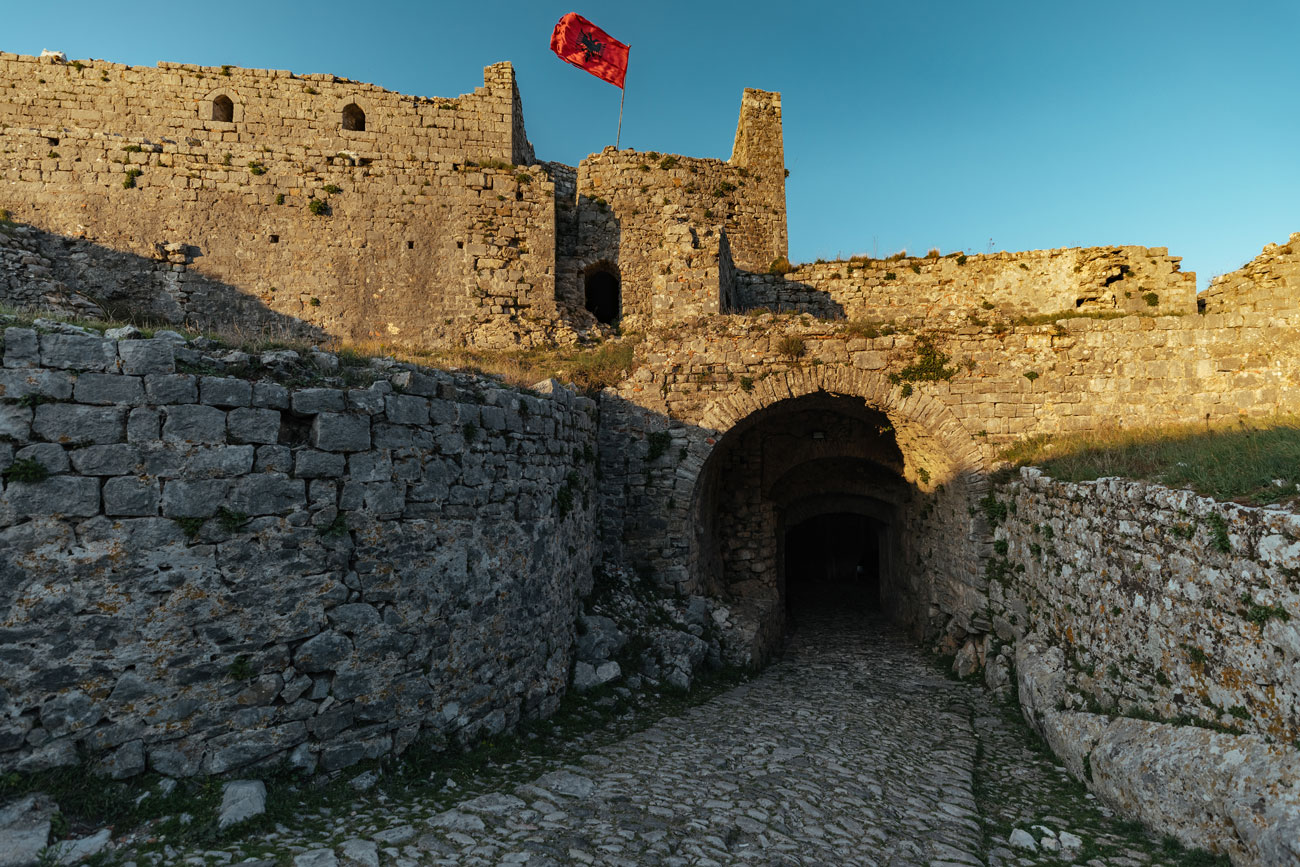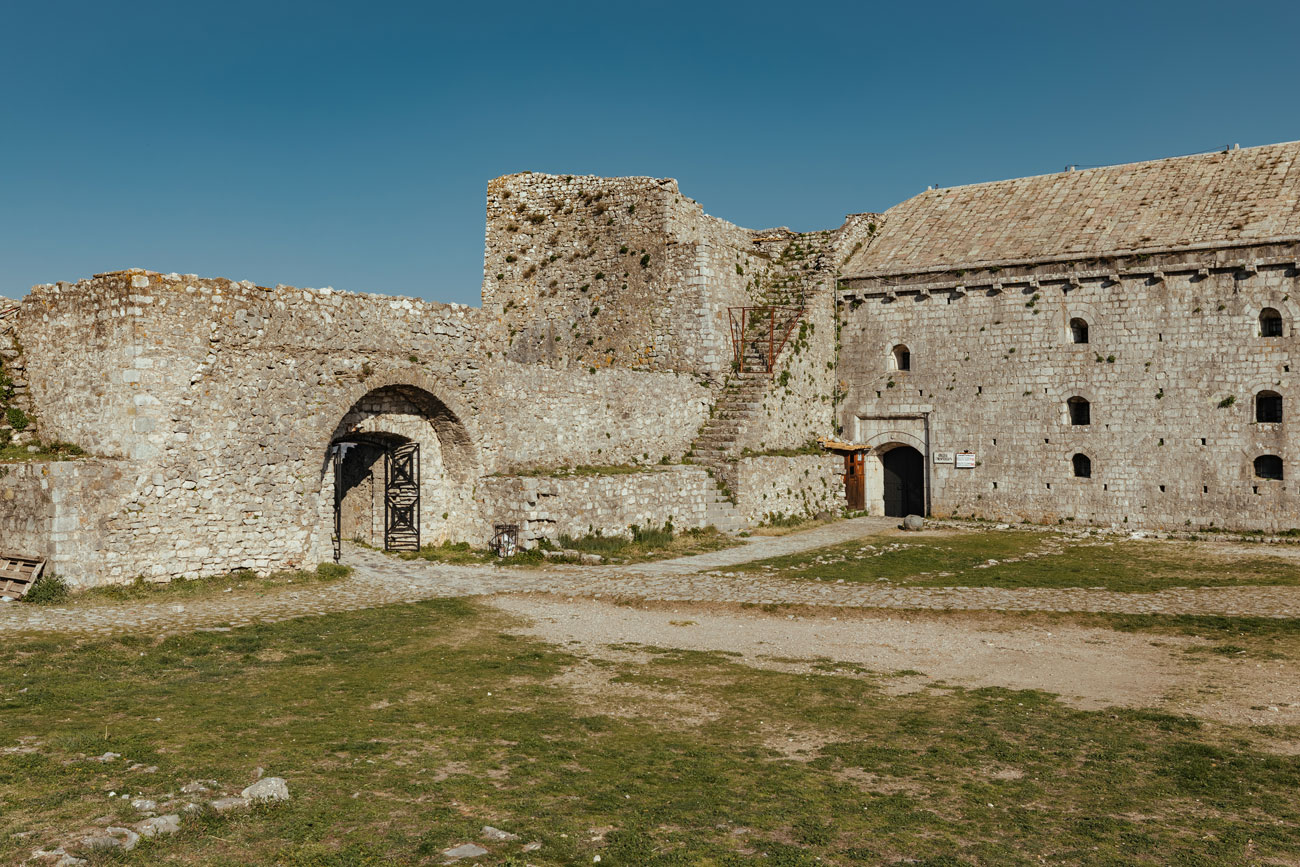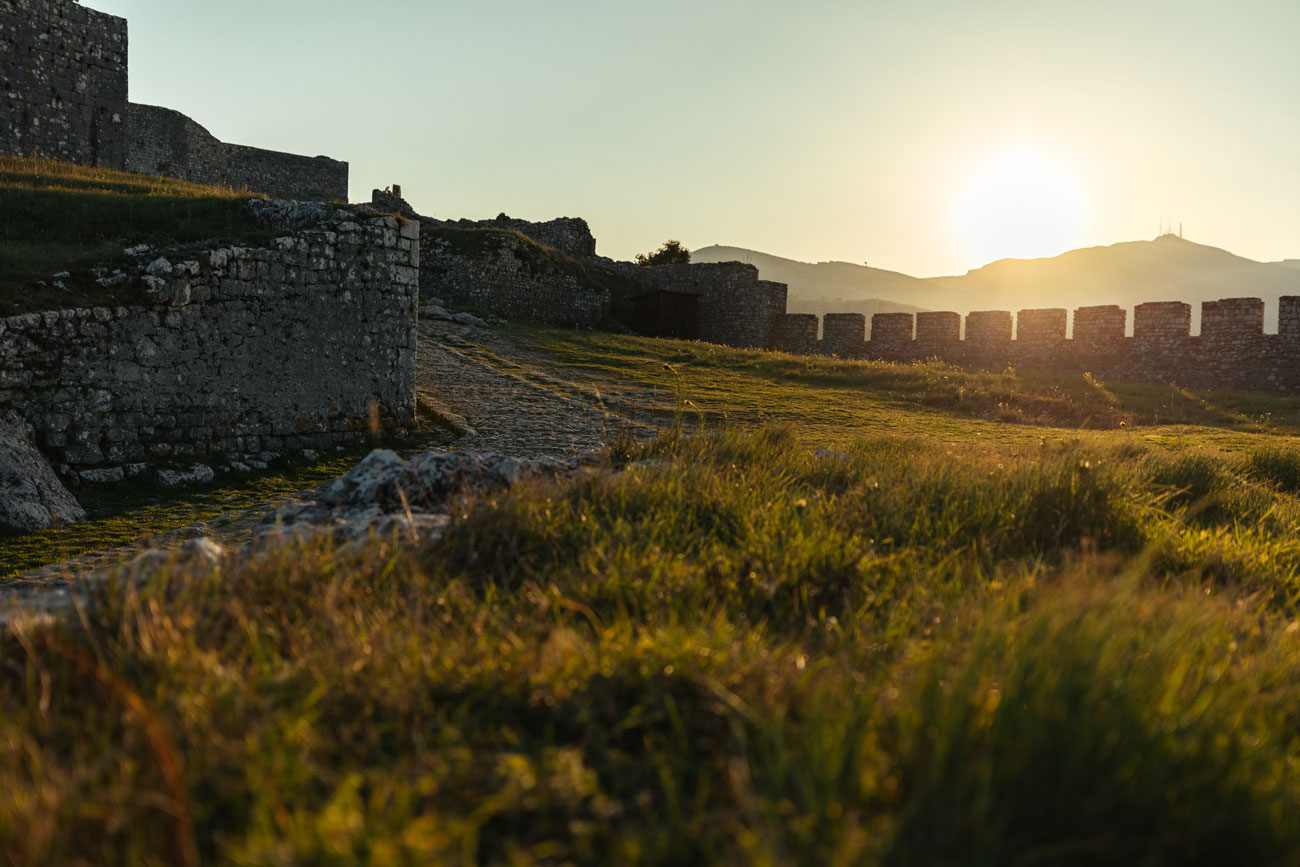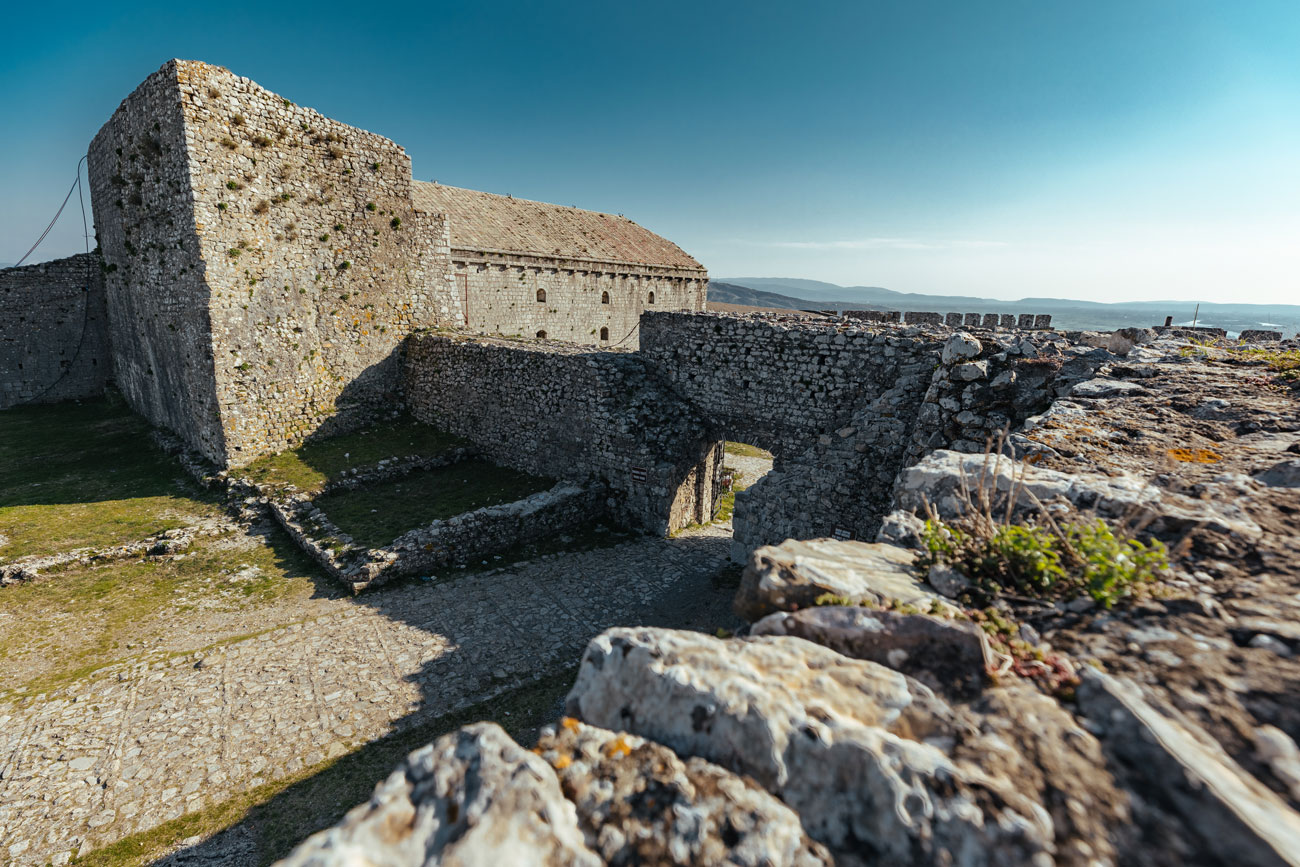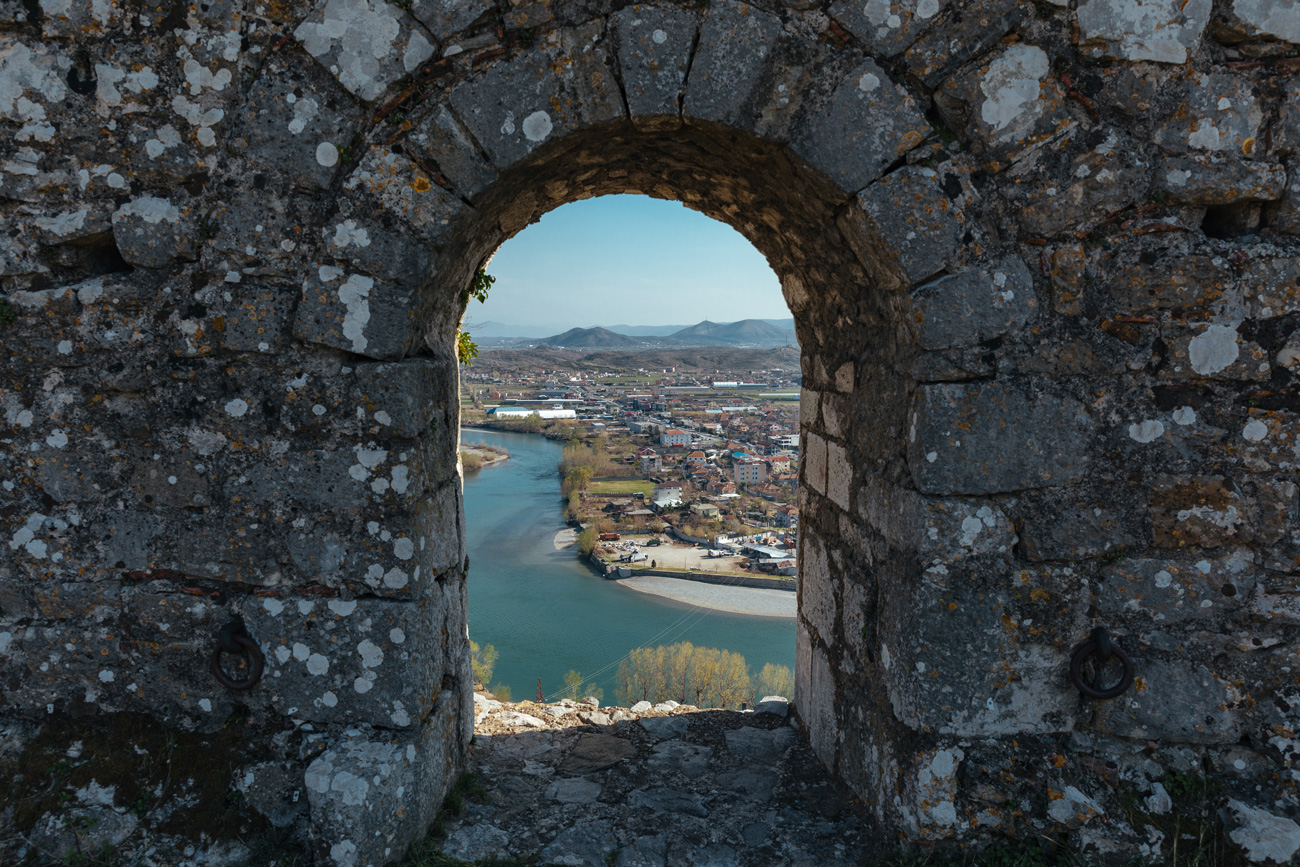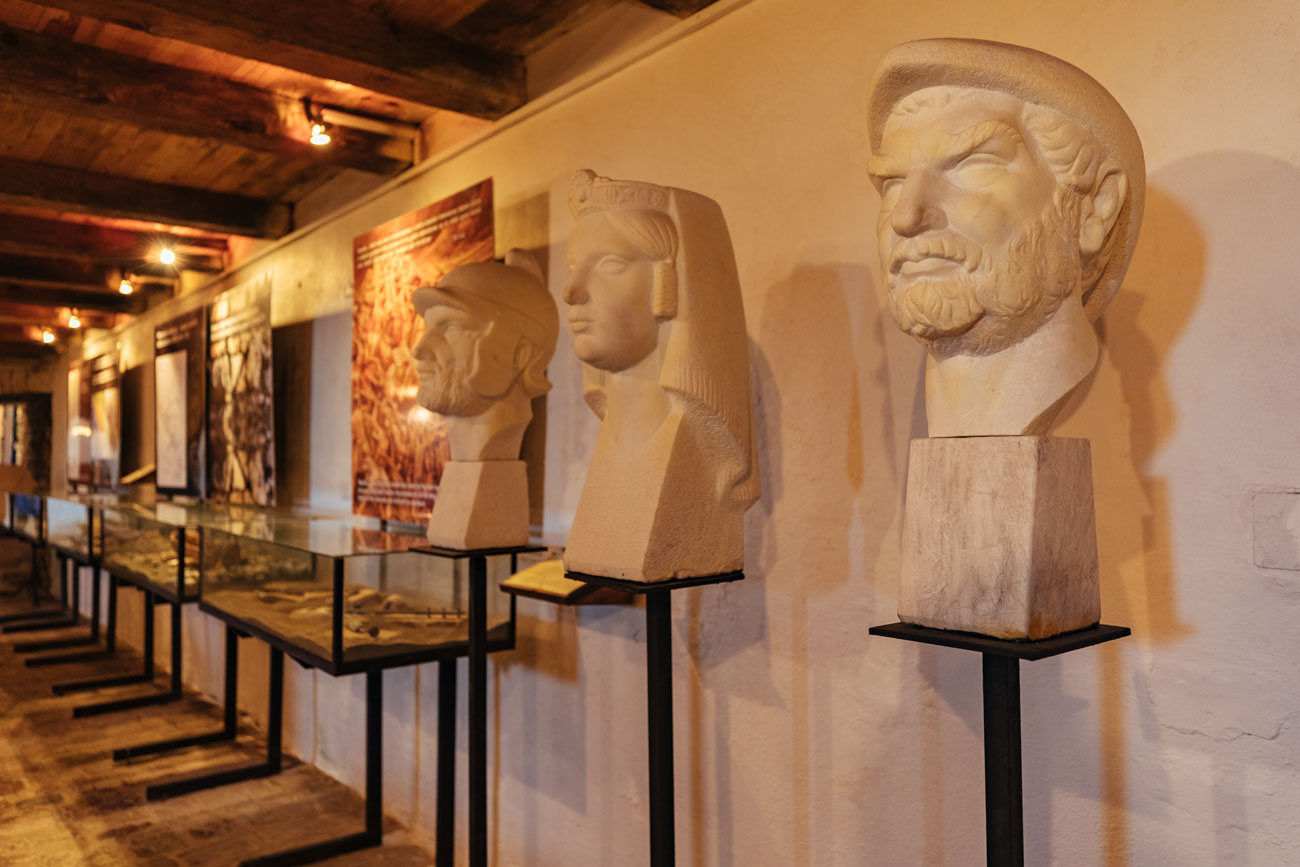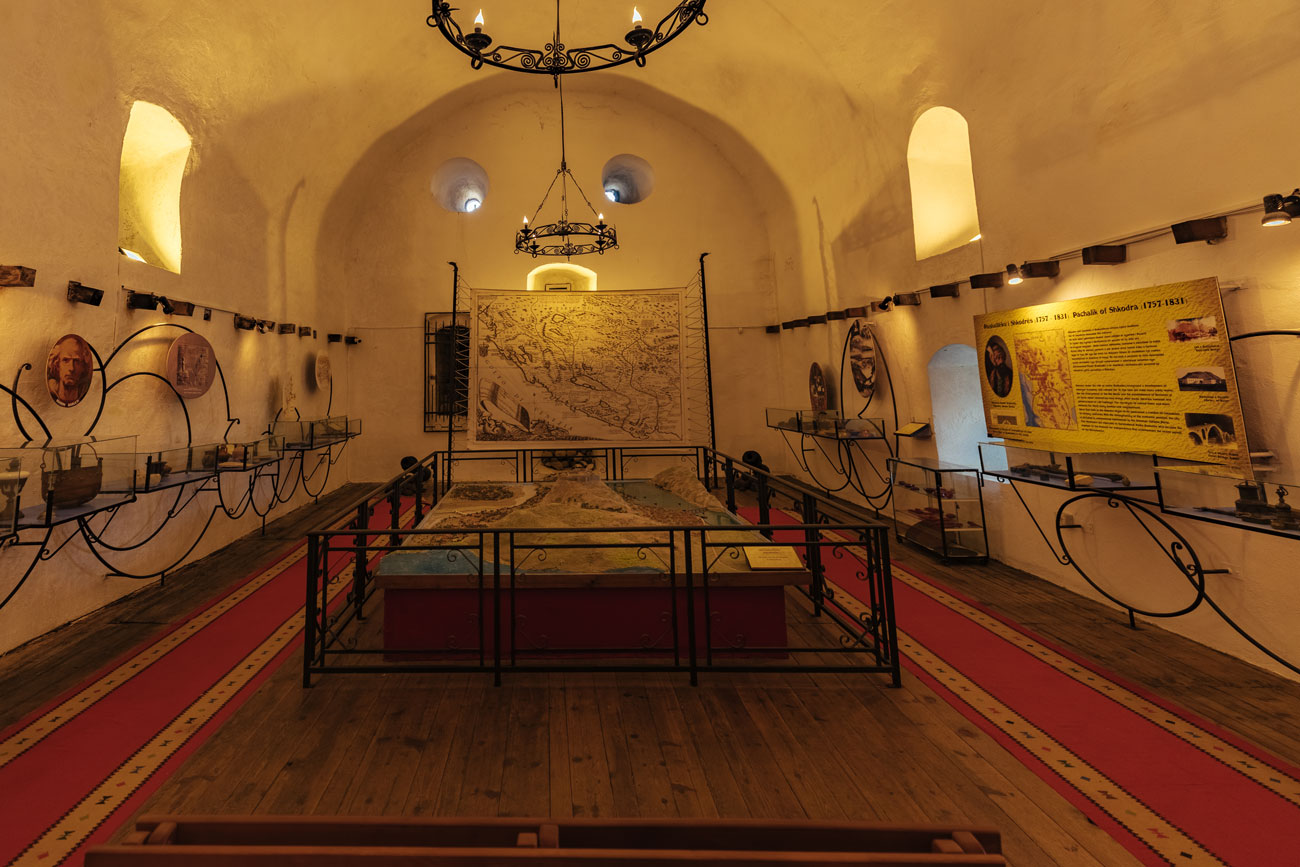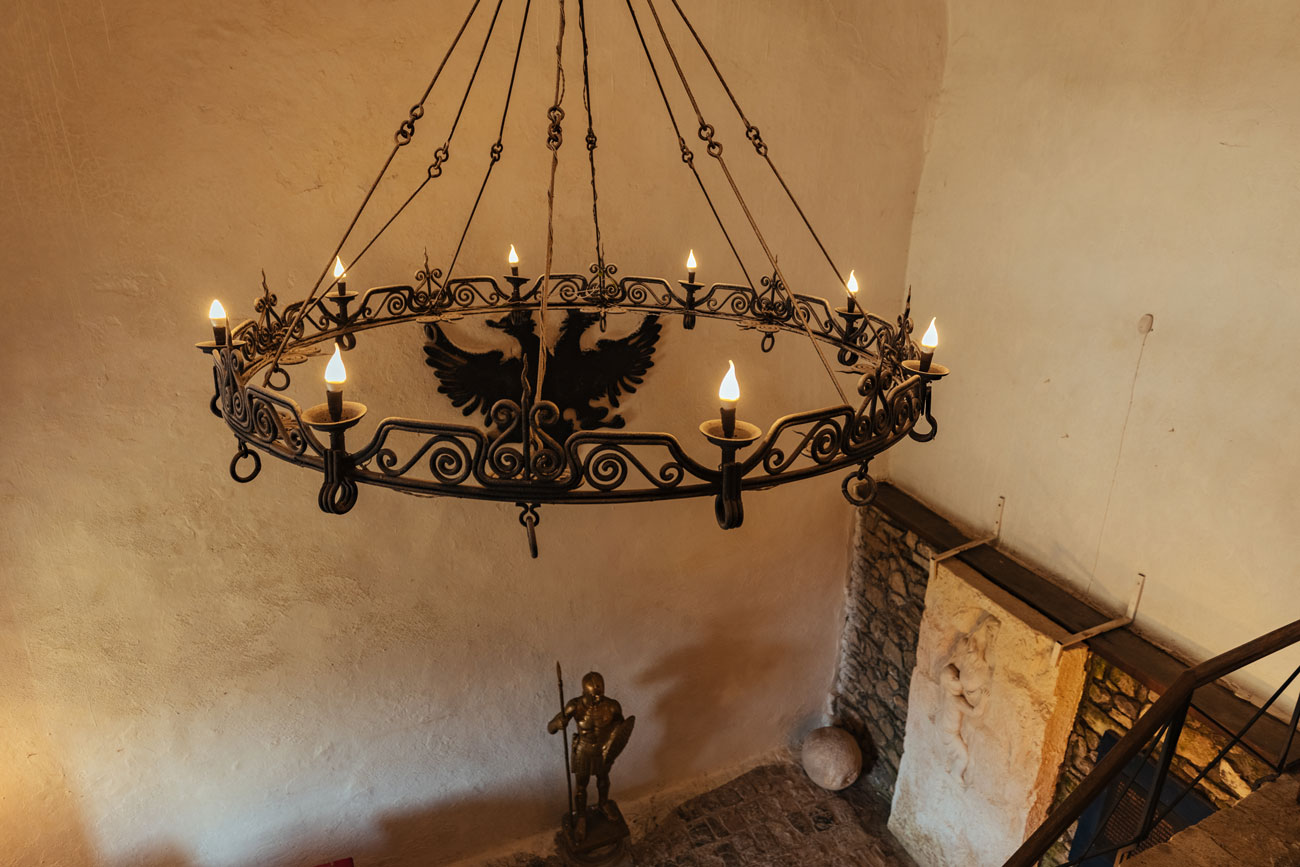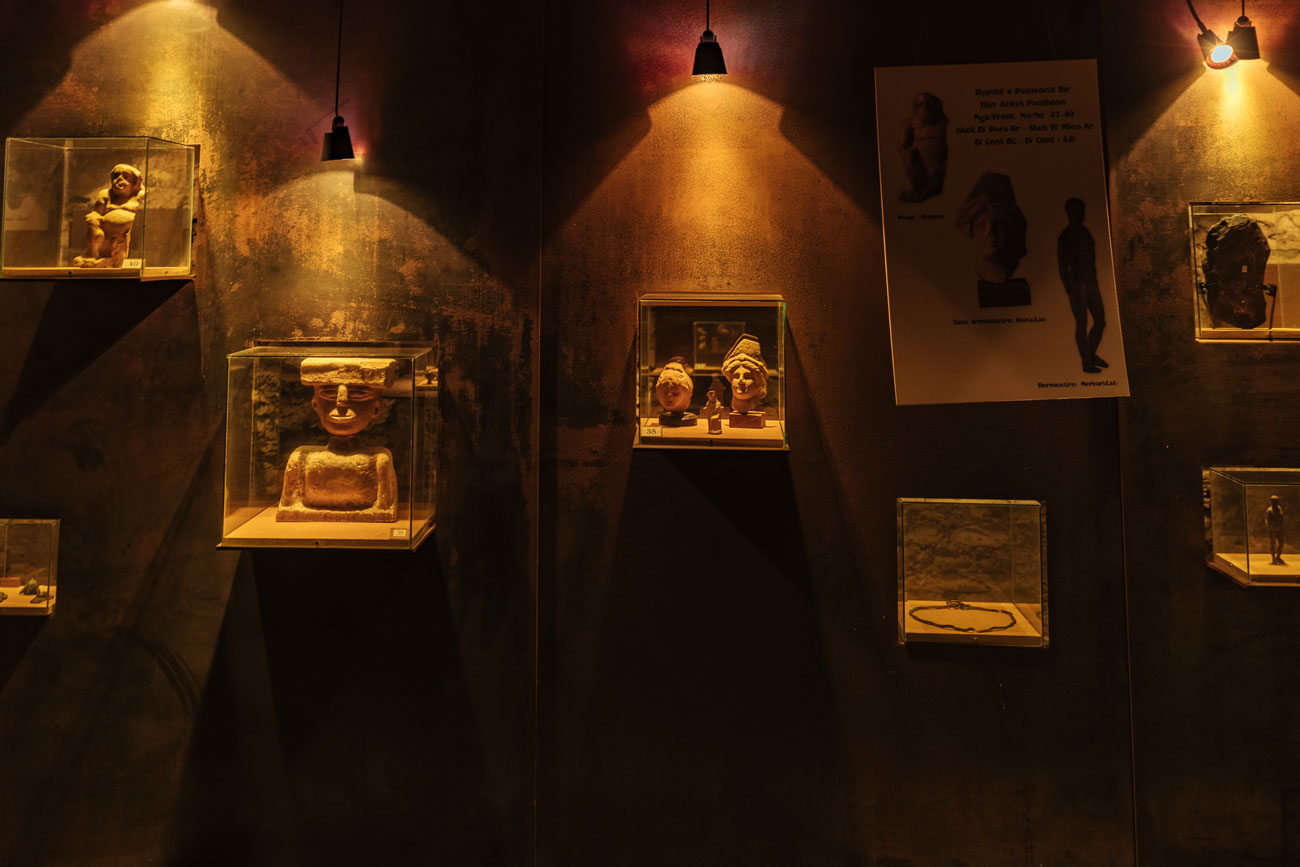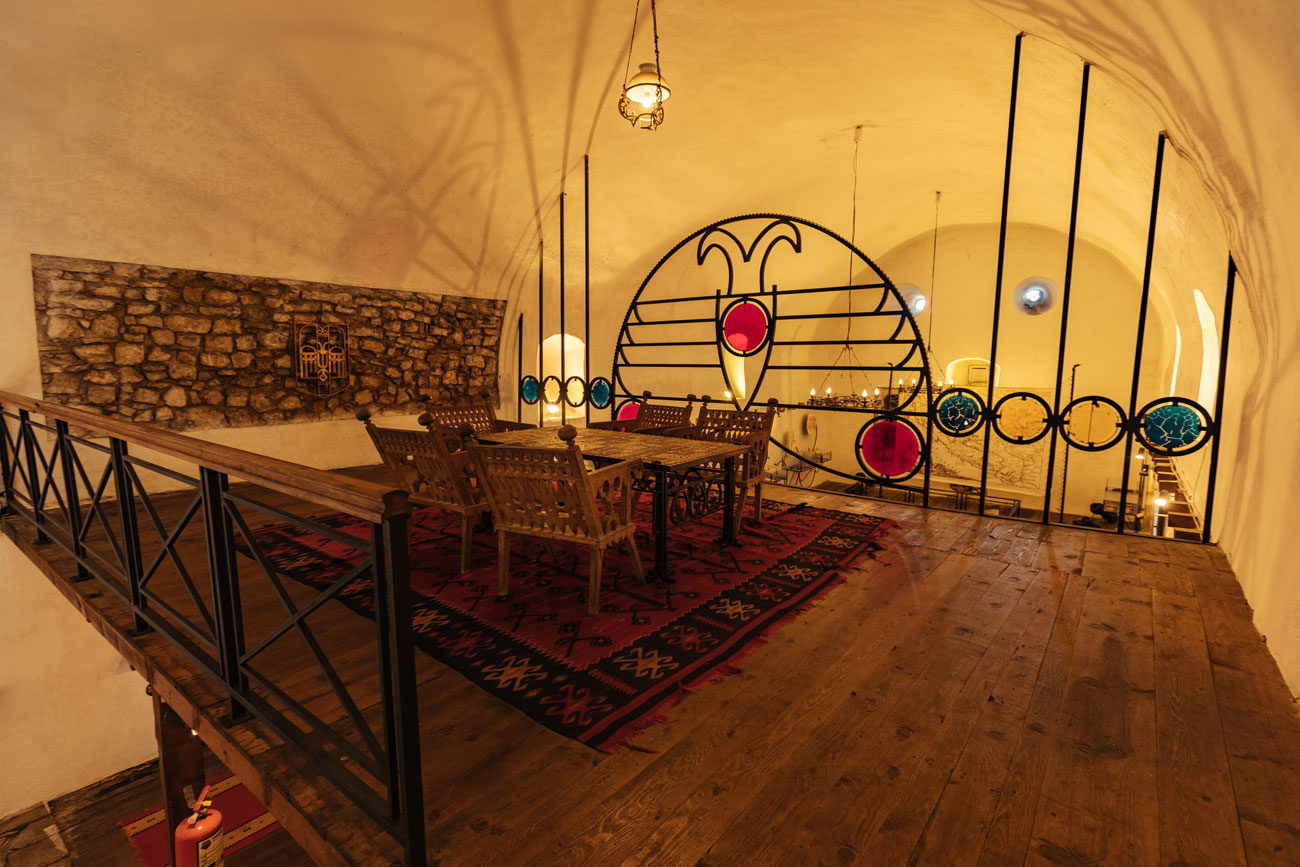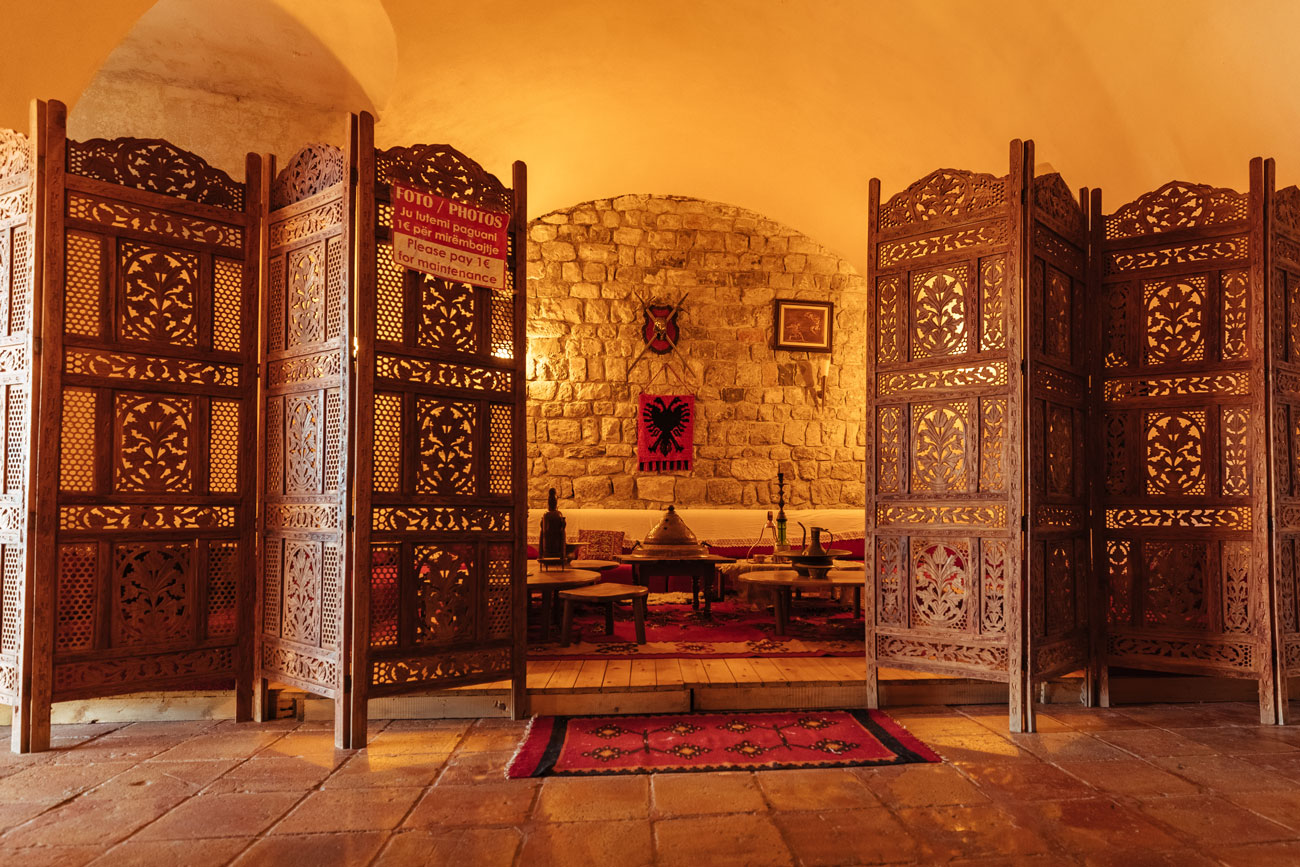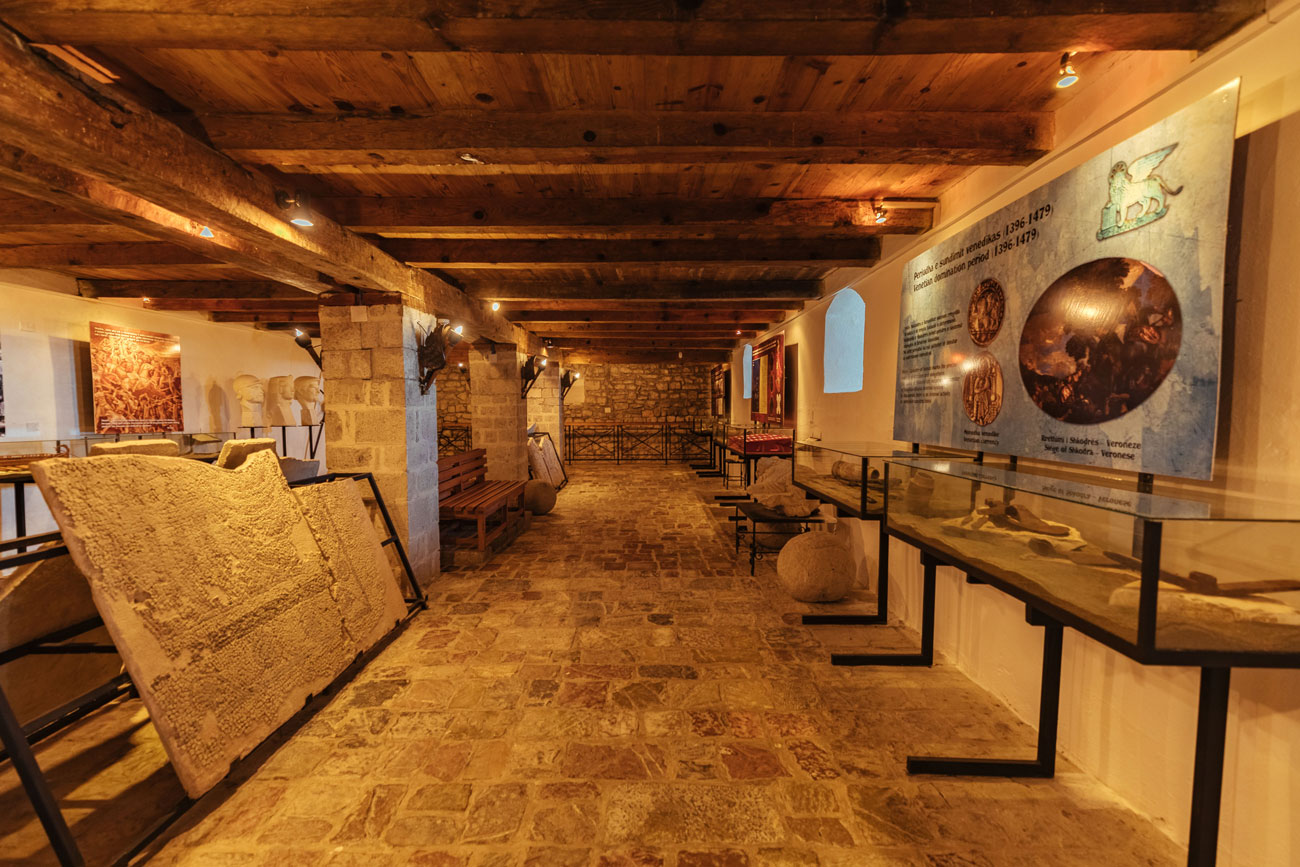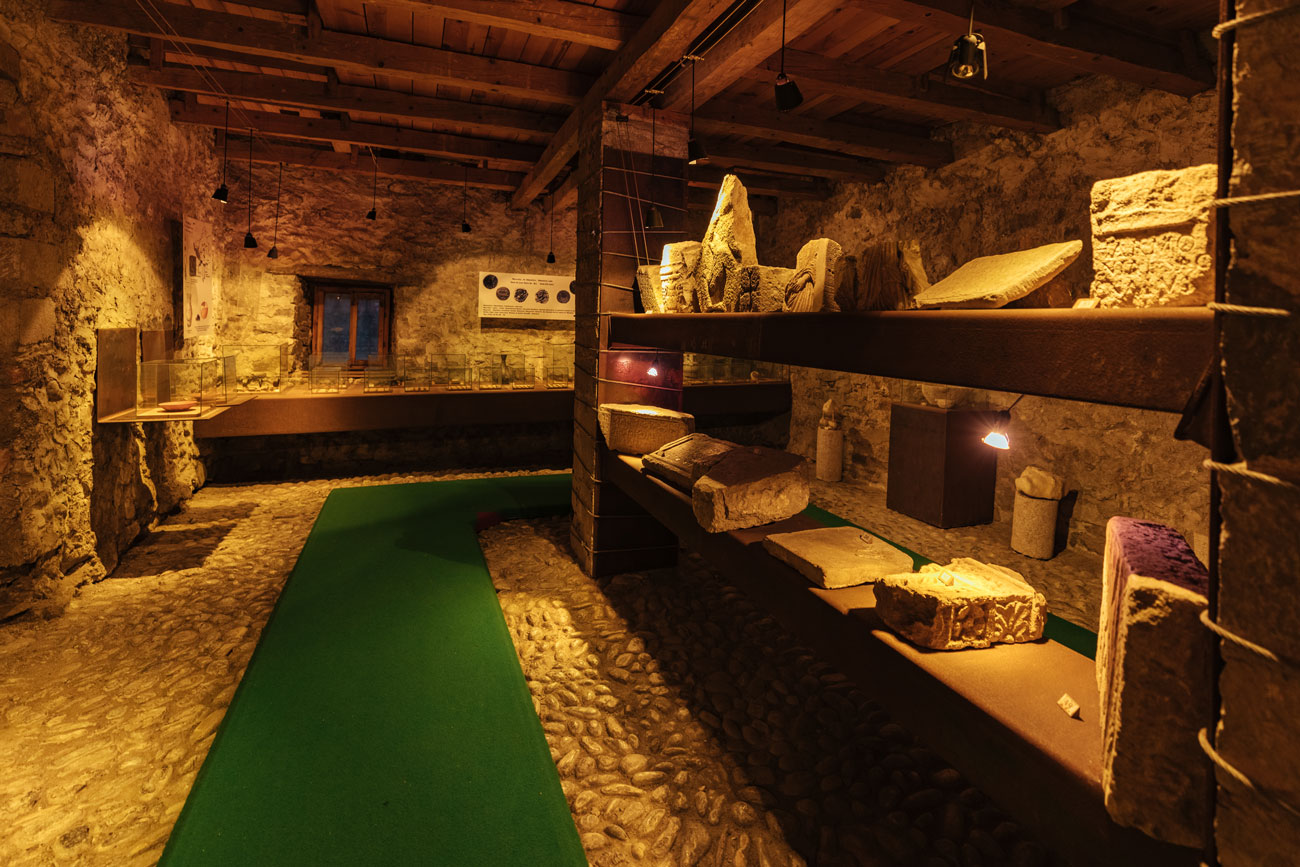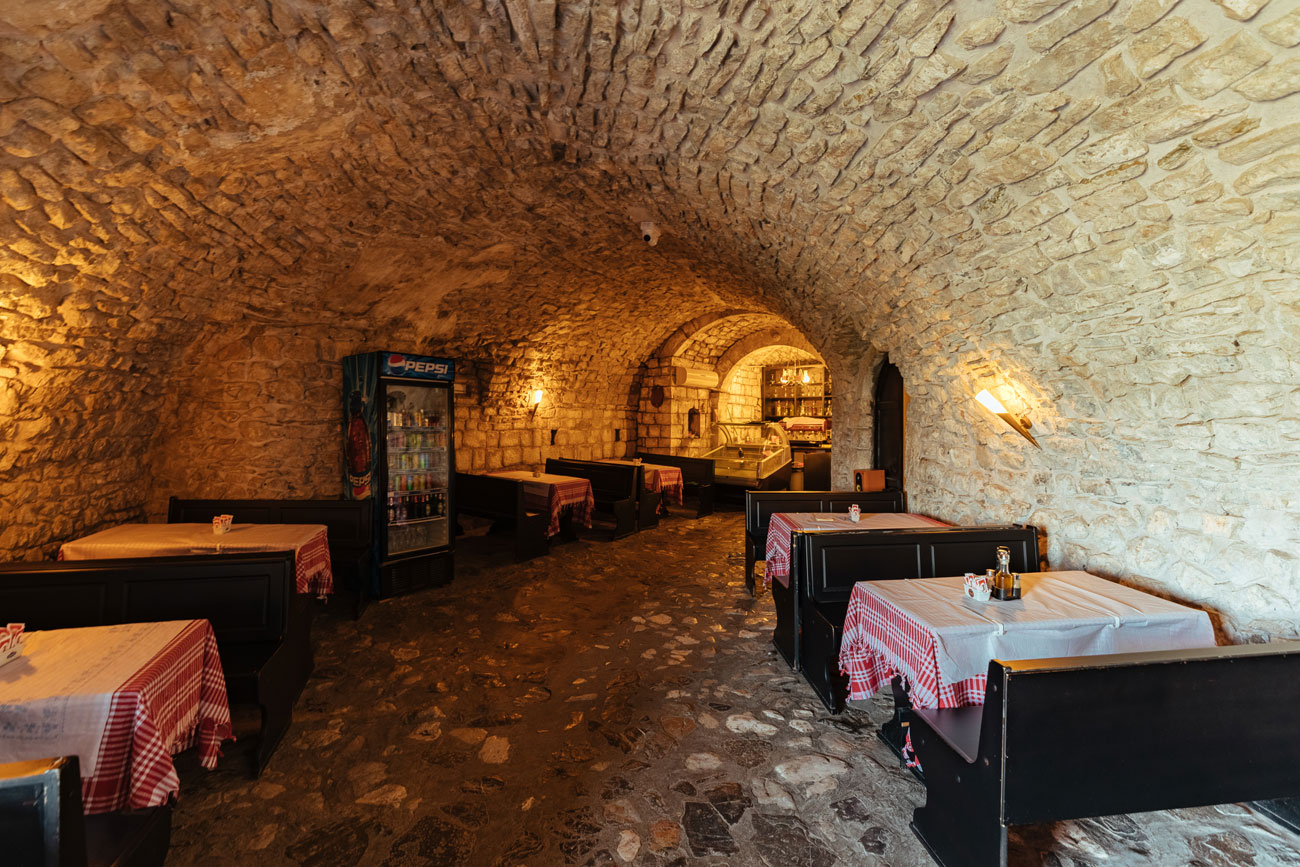The youngest and most beautiful aristocrat bride wanted to see from the coast of Shkodër Lake how a new fortress was being built on a rocky hill to defend the capital. The times were turbulent and dangerous and each day was precious.
The woman was slow and lost breath easily. You could tell by the intensity of kicks in her stomach that she was carrying a boy. And that boy was born, bigger, stronger and more cheerful than she had thought and he didn’t resemble her in any way. He was the spitting image of her husband, the youngest of three brothers landowners, the family’s and people’s favourite.
Rose could hardly wait to recover and see how her town was developing. She regularly went with her child to monitor the food delivery to the builders and the construction itself.
However, she soon realised that all that exertion was not bearing fruit. At first, you could hear the walls crack at some nights and then came the time when newly installed rocks, the largest ones, would slide each night.
Rose knew that no human being was strong enough to cause that.
The court and the people became unsettled, not only because of the news of foreigners from the east invading the Kingdom.
A day came when her sisters-in-law couldn’t provide food and Rose was happy to help.
At the entrance to the fortress, she met with her husband’s eyes wide open. And with strong arms of soldiers and builders, who grabbed her carefully, so as not to break her delicate bones.
At first, the surface of the lake echoed with Rose’s laughter, followed by cries of disbelief. Then came a scream. Eventually, a cry. In order to build unconquerable fortress, the builders spent the whole day building the only innocent one in. Alive, with her child watching.
She would have given up on her life had she been alone. She asked them to leave one breast to feed her son, at least.
However, the town around her was developing fast. It flourished for a short while.
And all was forgotten.
People later whispered in secrecy that the fairy, the mistress of three rivers and the lake, didn’t approve of the town. Whether the reasons were private or cosmic, for someone’s previous or future sins, there was no way of knowing.
But the three brothers could not afford to wait and leave the people and the land unprotected. They knew that for great achievements they simply needed an unimaginable sacrifice. And Rose learnt that you would be sacrificed by the one whose whole world was built around you.
The fortress has been conquered with extreme difficulty and very rarely ever since.
Sometimes, you can hear two women’s voices crying through the fog over the lake. One belongs to a human, the other doesn’t.
Legends about the Fortress
The great and well known Albanian writer during the 15th century Marin Barleti provides us with some information about the fortress’ name. He mentions, among other things, that a brother and sister, respectively named Roza and Fa, were the first founders of Shkodra, thus the name of the fortress was Rozafa. Another legend which aims to explain the name Rozafa is connected to the well-known human sacrifice for the fortress to be built.
According to the legend, three brothers struggled to build the castle, what they erected during the day, fell down at night. To keep the castle from falling down, they were advised to sacrifice a human life. The three brothers decided to sacrifice the first of their wives who would bring them lunch the next day. Fate picked Rozafa, the wife of the youngest brother, who accepted to be sacrificed and be walled in alive with the only condition that the right part of her body should be left exposed to take care for her new-born son. The internationally most famous version of the myth is Serbian epic poem “The Building of Skadar” (Zidanje Skadra) which describes the building of the fortress by the regal Mrnjavčević brothers — Vukašin, Uglješa and the youngest, mythical Gojko. According to Jacob Grimm, its translator into German, it is “one of the most touching poems of all nations and all times”.
Yet, another connection to the name may be the sacrificing of the Christian martyr Saints Sergius and Bachus near Resafa (Rusafa) Fortress in Syria. The connection may be the Christian monastery built on the saints’ relics near the fortress on the Buna river shores.
A tour of Rozafa Fortress
- Address: Str. Castle
- Open 8 a.m. – 8 p.m. (summer)
- Open 8 a.m. – 4 p.m. (winter)
- Admission: 200 LEK
The Castle of Shkodra, also known by the name of Rozafa Fortress, is perched on a craggy limestone hill, 136 meters above sea level, on the southern edge of the present city. It is surrounded by the rivers of Buna and Drin and is the most impressive sight of the city. The castle is encircled by a powerful system of defence walls and fortifications with a total perimeter of 800 meters, with alternating circular and rectangular towers. It is one of the largest and better preserved castles in the country.
Archaeological excavations have shown that the earliest signs of human habitation on the castle hill date as far back as the Early Bronze Age, 4000 years ago, followed later by an Illyrian fortress. Between the existing first two castle gates there are Illyrian’s cyclopean walls, which consist of huge, meticulously arranged rocks, dating back to 350 BC. During the early medieval period, a permanent castle was constructed here. It’s from this period that the legend of its construction originates — a legend that was first written down by the famous writer Marin Barleti in 1504. According to the legend, three brothers struggled to build the castle, what they erected during the day, fell down at night. To keep the castle from falling down, they were advised to sacrifice a human life. The three brothers decided to sacrifice the first of their wives who would bring them lunch the next day. Fate picked Rozafa, the wife of the youngest brother, who accepted to be sacrificed and be walled in alive with the only condition that the right part of her body should be left exposed to take care for her new-born son.
A number of earlier defence structures can be seen within the walls, overlying and complementing each other — Illyrian times, followed by those from the Balshas (14th century), Venetian rules (15th century), Turkish occupation (16th & 17th centuries) and the Bushatlis, an important feudal family of the 17th and 18th centuries. The main entrance of the castle is on the northern side, as well as a secret exit. The interior of it is an irregularly shaped area of about 4 hectares, divided into three courtyards, called the lower city, the middle city, and the castle, which are connected with gates. The castle has a smaller area than the other parts. It is situated in the highest and the most protected part of the hill and it served as the home of the city’s nobility. It also served as shelter to the garrison and as the last point of resistance. The main building was the harbour office, a three-floor building of the Venetian time, treated as a monument. The middle city is the central part of the castle with a bigger area; where among the various buildings, the church of Saint Stephan, built in 1319 can be mentioned. It was later converted to a mosque.
The lower city does not have any traces of buildings inside and it communicates directly with the main entrance of the castle. Beside the main entrance, the castle has some other secondary entrances, which served for manoeuvres of the forces in cases of sieges or secret exists. The castle with its powerful walls and towers managed to resist two long sieges and the continuous artillery bombardment of the Turks in 1474 and 1478-79. The castle had been the administrative unit of the city of Shkodra till 1865.
Today, the castle is the top tourist attraction of Shkodra. From its walls, there is a fantastic view towards the city. Lake Shkodra, the Buna River flowing towards the sea, and the Kiri and Drini rivers which join just below the castle before flowing into the Buna. The road to go up is rocky and slippery. It takes approximately 10 min by car from the centre. There is free parking close to the entrance, as well as at the bottom of the castle.
Today, the castle is the top tourist attraction of Shkodra. From its walls, there is a fantastic view towards the city. Lake Shkodra, the Buna River flowing towards the sea, and the Kiri and Drini rivers which join just below the castle before flowing into the Buna. The road to go up is rocky and slippery. It takes approximately 10 min by car from the centre. There is free parking close to the entrance, as well as at the bottom of the castle.
It is a religious building known as the St. Stephen Church, the city’s protective saint in the Middle Ages. This church was very important to the medieval city’s history. A roman-gothic construction, accommodating a square apse, it was likely built towards the end of the 13th century. The southern side of the building dates back to the Venetian period, the 15th century.
Following the Ottoman occupation of Shkodra, the church was converted into a mosque and was named the Mosque of Sultan Fatih (Mehmet II) in memory of the sultan who occupied the city. When the church was turned into a mosque, the construction was subjected to alterations. A minaret and a lateral gallery were built. The building was abandoned after 1865, when the vilayet’s ottoman administration left the castle to be settled in the new city.
Tours of cultural institutions
The Museum of Rozafa Fortress
- Address: Rozafa Fortress.
- Open 9 a.m. – 2:30 p.m.
- Closed: Saturday, Sunday.
- Admission 150 LEK.
The Fortress Museum is situated inside Rozafa Fortress. It sheds light on the history of the fortress, organized in two floors inside the only still standing Venetian building.
The Fortress Museum is located in a monumental three-story building from the 15th century known as “Kapiteneria”, The Captain’s Residence (Venetian ruler). It is evident that this was a military building because of the thickness of the walls and the narrow windows for positioning of artillery guns. The building facade is crafted with hewn stone, while the roof is covered with stone tablets. On the ground floor of the museum through the ceramic material of the illustrations there are traces of the prehistoric settlement on the castle hill with the strand from the Early Bronze Age.
Here on display are various archaeological objects, the three Illyrian kings Agron, Teuta and Gent, coin collections (lll-ll century BC), different objects of the early medieval period, collection of bombshells (last 15th century). On the upper floor, there are exposed documents and relics that reflect the late medieval and modern history of Rozafa Fortress. The exhibited original materials are accompanied by explanations, captioned pictures, and sketches of different maps.
The Historical Museum of Shkoder
- Address: Str. Oso Kuka, Shkoder
- Open 9 a.m. – 2:30 p.m.
- Closed: Saturday, Sunday
- Admission 150 LEK
The historical museum of Shkodra started being organized in the year of 1947, but took full form in 1949. It was placed in the centre of the town from the 19th century. The rich contributions of Father Shtjefen Gjecov as the first collector to this field should be noted. The museum is set in a typical Ottoman house of the 17th– 19thcentury “Oso Kuka”. It preserved the characteristic features of a Shkodra home of the type “with garret” and constitutes one of the most beautiful architectural accomplishments in traditional Albanian housing typology.
The Archaeology Department is located on the ground floor of the building, with exhibition halls and funds. It has an archaeological fund of about 1500 items coming from excavations or found throughout the basin of Shkodra. These items indicate the presence of human activity, uninterrupted from the Neolithic Age (3rd millennium BC) until the late Middle Ages (15th-16th century). The sector of Ethnography has a fund of about 2000 items (XVIII-XX century). They are craft products of Shkodra and surrounding areas: Dukagjin, Postrriba, Zadrima, Anamali, etc.
The ethnographic exhibition is located in the former guest room. The most interesting elements of this room are the gypsum chimney, wooden ceiling carved with rosette in the centre, windows on two levels, the alcove in the form of balcony, wall shelves along the walls decorated with floral motives.
The sector of History consists of historical buildings, archives, and pinacotheca. One part is on display while the rest is in depots. The fund of the museum’s historic buildings (about 500 objects) consists mainly of several collections that document the period from the 17th century to this day.
The Archive is an important part of the museum. Largest group of documents consists of letters written from the beginning of the 19th century until 1908. Photo archive consists of 1927 films, 3000 images, and 10000 files. In the Pinacotheca, a total of 110 art works (19th-20thcentury) are exhibited. Library manages to provide a relatively rich fund counting over 6000 titles.
The National Museum of Photography “Marubi”
- Address: Str. Kole Idromeno
- Website: marubi.gov.al
- Open 9 a.m. – 2 p.m./3 p.m. – 6 p.m.
- Closed on Mondays
- Admission 700 LEK
This is Albania’s only museum dedicated entirely to photography. It houses a vast collection of 500,294 photographs dating back to 1858 when the first images in Albania were recorded.
The design for the Marubi Museum promotes a rich dialogue between tradition and modernity. The legacy of the tradition is underlined by placing the museum in the historical building designed by the Albanian architect born in Shkoder, Kole Idromeno. The modern image of the museum is based on an abstract pattern, which is inspired by the geometry of the aperture of the photographic camera that opens and closes to control the light. This abstract pattern was used to design the structural layout of the five exhibition boxes installed in the building, integrating a complete and versatile exhibition system that includes frames to exhibit photos and documents, showcases for objects and video screens for slide-shows and short movies.
The collection represents a unique documentation of regional history over a period of nearly 157 years, with the photographs of Pietro Marubbi, Mati Kodheli, Kel Marubi, Gegë Marubi, Kole Idromeno, Shan Pici, Kolë Maca, Dedë Jakova, Pjeter Rraboshta, Angjelin Nënshati.
In December 2016 it was nominated for the European Museum of the Year Award by the European Museum Forum. The collection is protected from deterioration and properly guarded by UNESCO.
The Marubi Dinasty started with Pjeter Marubi (1834-1903), known today as the father of Albanian photography. He was from Piacenza, Italy, and emigrated to Shkodra for political reasons in 1856. It is thought that in 1856 he was the first to use the wet collodion process, the most advanced photographic technology of the time. Two years later he took the first-ever photograph in Albania and created the Marubi studio. His photographs with historical significance were used as illustrations in many magazines and books of the time. The second generation of the Marubi studio was represented by Mikel Kodheli. In 1885, Pjeter hired Mikel Kodheli (1870-1940), whom he later adopted, renaming him Kel Marubi. Apart from the studio work, Kel documented the city life and landscapes with people and made the studio the most famous of its kind, especially in the art of the portrait. The third generation is represented by Gegë (1907-1984), son of Kel, who graduated in Paris at the “Lumiere Brothers”, the first school of photos and cinematography in the world. He worked with the latest techniques of this art, infrared, solarium and relief photography. In the 1970s he donated the studio’s photographic collection (150.000 negatives) to the Albanian State and worked for their preservation until his death.
Cultural events at the fortress
There are numerous cultural activities taking place inside the fortress such as festivals, music events and theatres, but none of them has a permanent date or is repeated over the years. For this reason the list below is a glimpse of what has been provided in the recent years inside the fortress:
- Colours of Albania 2018, a photographic contest to present Albanian tourism to the world.
- Viva La Musica, commemorating the world music day.
- The little archaeologist, activities sponsored by the Ministry of Culture.
Tourist facilities at the Fortress
The fortress has only one restaurant, which is a private business operating through the rental of space on the higher part of the fortress, next to the fortress museum.
One souvenir shop operates inside the fortress, as visitors enter the main door of the site, and the museum also operates a small souvenir stand.
History
The Albanian city of Shkodra lies in the centre of the region, next to the homonymous lake, precisely at the confluence of three rivers: the Kir and the Drin, which descend from the highlands, and the Buna, the emissary of Lake Shkodra.
The River Buna, the only fully navigable in Albania, is fed with the waters of the above mentioned rivers and meanders for over 40 km heading south and flowing into the Adriatic sea. Favoured by its geographical position, natural resources and good climate, the region of Shkodra had an early, intense and undisrupted life for thousands of years.
The ancient city of Shkodra, situated between the sea and the alps, has always been an important link for communication in the region and beyond, linking it to the north, east, south and west, especially the latter using the Buna river fluvial route of direct connectivity with the Adriatic-Mediterranean ports.
It is mentioned in ancient sources with various names such as Scodra, Scorda, Skodrai, Skodre, Skydrenopolis, etc. The Early Bronze Age (2100 to 1200 B.C.) is so far the earliest archaeological date attributed to the beginning of human activity at this site. There is a continuation during the Iron Age (11th-5thcentury BC), while in the 4thcentury BC it was an Illyrian settlement. After being ruled by several Illyrian kings, in 168 B.C. it was subdued to the Romans and became an oppidum civium romanorum. In the 2ndcentury AD, the city became a Roman colony by the name of Colonia Claudia Augusta.
During Emperor Diocletian’s reforms it became the seat of the province of Praevalis, as well as the seat of the bishopric of the province. Byzantine Emperor Heraclius granted the Serbs a territory in this region during the eаrly 7th century, and it was part and occasionally the seat of their kingdoms till 14th century. During the desintegration of the Serbian Empire, Shkodër was held by the Balšić family of Zeta. They gave the city to the Venеtian Republic in 1396, in order to make a defense area from the mighty Ottoman Empire. The Ottomans conquered it in 1479 and the name was changed to Iskenderije (Ottoman), Scutari (Latin) or Skadar (Slavic) and Shkodra as Albanians call it. After a slow but steady development, in the 17thand 18thcentury, it became the main development centre of the Albanian inhabited lands. The greatest economic development took place in the 19thcentury.
Certainly the pivotal point has always been Rozafa Fortress, strategically located to the south of the city.



